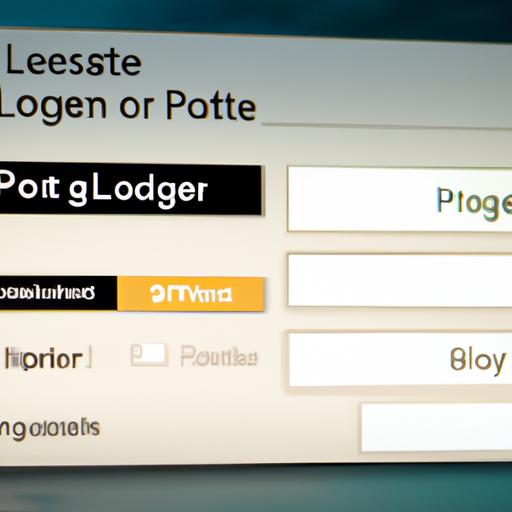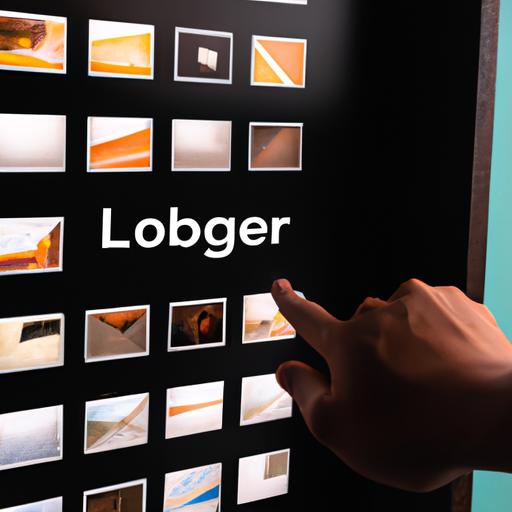If you’re a photographer, you’re likely familiar with Adobe’s Lightroom editing software. It’s an incredibly powerful tool for adjusting and enhancing your images, but did you know that it also allows you to save and apply presets?
Presets are customizable settings that you can apply to your images with just a few clicks. They can help you speed up your editing workflow, maintain consistency across your photos, and achieve a specific look or style. In this article, we’re going to dive into the world of Lightroom presets and show you how to save them.
Saving presets in Lightroom is a straightforward process, but it can be a bit confusing if you’re new to the software. We’ll take you through it step by step, so you can start creating and using your own presets in no time.
So, if you’re ready to take your editing game to the next level, let’s dive in and learn how to save presets in lightroom.
Understanding Lightroom Presets

Definition of Lightroom Presets and How They Work
Before we dive into how to save presets in Lightroom, let’s first define what they are and how they work.
A Lightroom preset is a pre-defined set of adjustments that you can apply to your images with just one click. These adjustments can include things like exposure, contrast, saturation, and more. Presets are created by adjusting the sliders in the Develop module of Lightroom and then saving those settings as a preset.
Once you’ve created a preset, you can apply it to any image in Lightroom with just one click. This can be a huge time-saver, especially if you find yourself making the same adjustments to multiple images.
Advantages of Using Lightroom Presets
There are several advantages to using Lightroom presets in your editing workflow. Here are just a few:
-
Speed up your editing workflow. Applying a preset to an image takes just one click, which can save you a lot of time when editing a large batch of photos.
-
Maintain consistency across your photos. If you’re editing a series of images that were shot under similar lighting conditions, applying the same preset to all of them can help ensure that they all have a consistent look and feel.
-
Experiment with different styles. Presets can be a great way to experiment with different editing styles and see how they look on your photos.
Overall, Lightroom presets are a powerful tool that can help you streamline your editing workflow and achieve the look you want for your images.
How to Create Lightroom Presets

Creating your own Lightroom presets can be a fun and rewarding process, and it doesn’t have to be difficult. With just a few clicks, you can save your favorite editing settings and apply them to other images in the future. In this section, we’ll walk you through the steps to create a preset from scratch.
Step-by-Step Guide on How to Create a Preset from Scratch
- Open Lightroom and select an image to edit.
- Make adjustments to your image until it looks the way you want it to.
- Once you’re happy with your edits, click on the Develop module.
- Click on the plus sign next to the Presets panel to create a new preset.
- Give your preset a name that makes sense to you and describes the adjustments you made.
- Select the settings you want to include in your preset by checking the corresponding boxes.
- Click “Create” to save your preset.
That’s it! You’ve just created your first Lightroom preset. Now you can apply it to other images with just a few clicks.
Tips on How to Create Effective Presets
While it’s easy to create presets, not all presets are created equal. Here are some tips to help you create effective presets that you’ll actually use:
- Start with an image that you’re happy with and want to replicate in the future.
- Keep your preset names descriptive and organized.
- Be selective with the settings you include in your presets. Too many settings can be overwhelming.
- Use a light touch with your adjustments. Overly aggressive presets can be difficult to use on a variety of images.
- Test your presets on a variety of images to ensure they work well in different lighting situations.
By following these tips, you’ll be able to create effective Lightroom presets that will save you time and help you achieve the look you want in your images.
How to Save Presets in Lightroom
If you’ve made adjustments to an image in Lightroom and want to save those settings for future use, you can create a preset. Saving presets can help you streamline your editing workflow and maintain a consistent look across your images. Here’s how to save presets in Lightroom:
Step 1: Make Adjustments to Your Image
Before you can save a preset, you need to make the adjustments you want to apply to future images. This can include adjustments to exposure, contrast, color, and more. Once you’ve made your desired changes, navigate to the Develop module in Lightroom.
Step 2: Open the Presets Panel
In the Develop module, you’ll find the Presets panel on the left side of the screen. Click on the plus (+) icon at the top of the panel to create a new preset.
Step 3: Name Your Preset
In the New Develop Preset window that pops up, you’ll need to give your preset a name. Be specific and descriptive so that you can easily identify it later.
Step 4: Choose Preset Settings
In the New Develop Preset window, you’ll see a list of settings that you can include in your preset. Check the box next to each setting that you want to include. You can also choose to include settings from other panels, such as the Lens Corrections or Effects panels.
Step 5: Save Your Preset
Once you’ve chosen your settings, click the Create button to save your preset. Your new preset will now appear in the Presets panel for future use.
In addition to creating presets from scratch, you can also save presets from existing images. Simply select an image with the adjustments you want to save and follow the same steps outlined above.
Saving presets in Lightroom is a powerful way to streamline your editing workflow and maintain a consistent look across your images. With these steps, you’ll be able to save your own presets in no time.
How to Organize and Manage Presets in Lightroom
Once you start creating presets in Lightroom, it’s easy to get carried away and end up with a cluttered mess of settings. That’s why it’s essential to organize and manage your presets effectively.
Tips on How to Organize and Manage Presets in Lightroom
Here are some tips to help you keep your preset library organized and easy to navigate:
1. Use Folders
One of the best ways to keep your presets organized is to use folders. You can create folders based on the type of preset or the style of editing you’re doing. For example, you might have folders for black and white presets, portrait presets, or landscape presets.
2. Rename and Delete Presets
It’s easy to accumulate a lot of presets over time, and not all of them are going to be winners. Take the time to go through your library and delete any presets that you don’t use or that are no longer relevant. You can also rename presets to make them easier to find.
3. Use Keywords
Another way to make your presets easier to find is to use keywords. You can add keywords to your presets based on the type of image they work well with or the style of editing. This will make it easier to find the right preset when you’re working on a specific project.
Best Practices for Maintaining an Organized Preset Library
Here are some best practices to keep in mind when managing your preset library:
- Regularly go through your library and delete any presets you no longer use or need.
- Keep your presets organized by using folders and keywords.
- Don’t be afraid to experiment and create new presets, but only save the ones that you know you’ll use again.
- Backup your preset library regularly so you don’t lose your hard work.
By following these tips and best practices, you can keep your preset library organized and easy to navigate, allowing you to work more efficiently and effectively in Lightroom.
Conclusion
In conclusion, Lightroom presets are a powerful tool for photographers to speed up their editing workflow, achieve consistency across their photos, and create a specific look or style. By following the steps outlined in this article, you can easily save and apply your own presets in Lightroom.
Remember, it’s important to organize and manage your presets effectively to maintain an efficient workflow. Take the time to label and group your presets appropriately, and consider backing them up to ensure you don’t lose your hard work.
At Ngcloudy.com, we understand the importance of efficient and effective editing workflows for photographers. That’s why we’re committed to providing resources and tools to help you streamline your process and achieve your creative vision. We hope this article has been helpful, and we look forward to continuing to support you on your photography journey.

